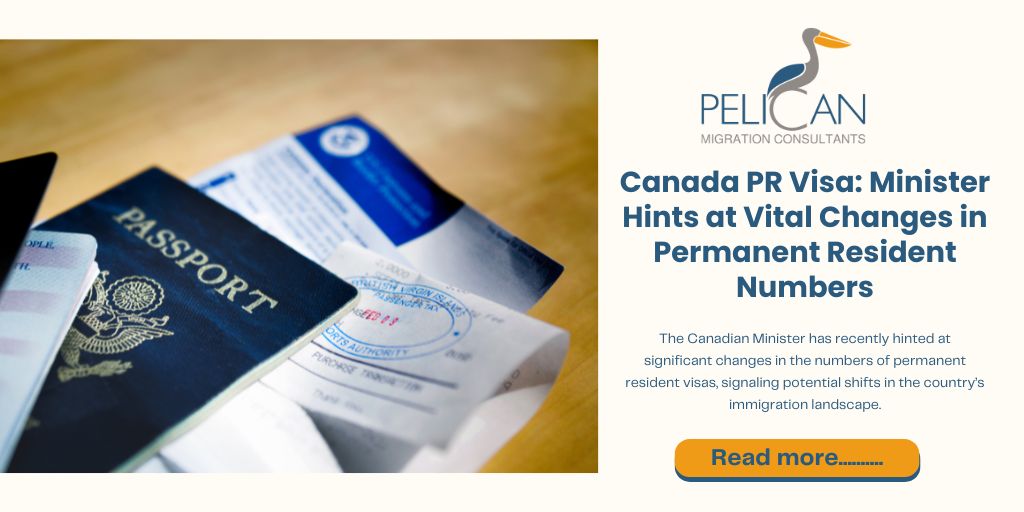
Recent remarks by Canada’s Minister of Immigration, Refugees, and Citizenship, Marc Miller, have sparked keen interest in potential shifts in Canada’s immigration policies, especially concerning the Canada PR Visa. Miller’s statements, given during a high-profile interview, suggest that significant changes are on the horizon for permanent residency numbers and immigration categories, signaling a possible reimagining of the country's approach to immigration.
A Significant Shift in Immigration Policy?
Canada has always been a global leader in immigration, continuously evolving its policies to meet both domestic and international challenges. Minister Miller’s recent interview indicates that the forthcoming changes won’t just be superficial. His emphasis on "meaningful and substantial" revisions suggests that Canada may be rethinking how it approaches permanent residency, particularly in terms of balancing the numbers and categories of new immigrants.
One major area of consideration is economic immigration, which currently accounts for about 60% of the country's overall intake. While this focus has helped drive economic growth and fill labor gaps, Miller hinted that future adjustments might be necessary to reflect changing needs. His comments suggest that the government is evaluating whether the current approach should be expanded or refined, without jeopardizing Canada's long-standing pro-immigration stance.
Additionally, Miller floated the possibility of revising certain immigration streams, potentially adjusting the balance between economic, humanitarian, and family reunification programs. This could mean that future permanent residency programs may prioritize different applicant groups based on emerging economic and social goals.
Public Sentiment and the Challenge of Policy Adjustments
Public opinion on immigration has shifted in recent years, driven by concerns over housing, public services, and economic pressures. While immigration has traditionally been seen as a positive force in Canada, recent polls show a dip in support, largely fueled by the rising cost of living and challenges in the housing market. As a result, policymakers are facing pressure to address these concerns without undermining the benefits of immigration.
To this end, the government has already taken steps to address public concerns. The Immigration, Refugees, and Citizenship Canada (IRCC) has imposed caps on study permits for international students and restricted low-wage temporary foreign workers in regions with high unemployment rates. These actions indicate that the government is attempting to find a balance between public opinion and its long-term immigration objectives.
Miller acknowledged the critical role immigration played in helping Canada weather the economic challenges of the COVID-19 pandemic. Immigration bolstered the country’s labor force and helped stave off a potential recession, further underscoring the importance of maintaining a robust and flexible immigration system. However, the government is now tasked with the challenge of ensuring that immigration continues to serve the nation’s economic interests without straining public services.
What Changes Are Expected?
With the upcoming release of Canada’s new Immigration Levels Plan, there is much speculation about what changes might be included. This plan, which is updated annually, outlines Canada’s goals for the number of permanent residents it intends to welcome in the coming years. It also serves as a blueprint for managing immigration streams, and in this iteration, there’s talk of the plan including targets for temporary residents like work permit holders and international students for the first time.
This expanded focus on temporary residents reflects Canada’s need to manage both short-term and long-term immigration more effectively. While Prime Minister Justin Trudeau has reiterated the country’s commitment to maintaining a positive immigration policy, the plan is expected to strike a balance between public concerns and economic necessity. The current immigration targets stand at 500,000 new permanent residents by 2025 and 2026, but these numbers may be adjusted based on the evolving needs of the country.
Changes to the Canada PR Visa system, especially concerning who qualifies and in what numbers, will likely be influenced by these broader policy considerations. With economic needs, public sentiment, and housing challenges all playing a role, the government’s next steps will be critical in shaping Canada’s immigration future.
Your Trusted Pathway to Canada: Pelican Migration Consultants in Dubai
If you're in Dubai and seeking professional assistance to secure your Canada’s PR Visa, Pelican Migration Consultants is your trusted partner. With a team of seasoned experts, they specialize in guiding individuals and families through the complex immigration process, ensuring a smooth and successful journey. As one of the leading Canada immigration consultants in Dubai, Pelican Migration Consultants offers personalized services tailored to your unique needs, making your dream of living in Canada a reality with confidence and ease.
Conclusion
The anticipated changes to Canada’s immigration policies, particularly the Canada’s PR Visa, signal an exciting new chapter for prospective immigrants. With a focus on balancing economic needs and public sentiment, the adjustments may redefine who qualifies for permanent residency and in what numbers. As Canada evolves its approach, applicants should stay informed about the latest updates. For expert guidance, Pelican Migration Consultants in Dubai provides invaluable support in navigating the Canada PR Visa process smoothly.
Frequently Asked Questions
1. What changes are expected in Canada PR Visa policies?
Upcoming changes may focus on adjusting the numbers and categories of permanent residents, including a shift in economic, humanitarian, and family reunification programs.
2. How will these changes impact economic immigration?
Economic immigration, which currently makes up 60% of Canada's intake, may be expanded or refined based on emerging economic needs and labor demands.
3. What role does public sentiment play in immigration policy?
Public concerns, such as housing and cost of living, are influencing policy adjustments. The government is balancing immigration benefits with these concerns.
4. Will the new plan include targets for temporary residents?
Yes, for the first time, Canada’s Immigration Levels Plan may include targets for temporary residents, such as work permit holders and international students.
5. How can Pelican Migration Consultants assist with the Canada PR Visa process?
Pelican Migration Consultants in Dubai offers expert guidance and personalized services to help individuals and families navigate the complex Canada PR Visa process smoothly.


